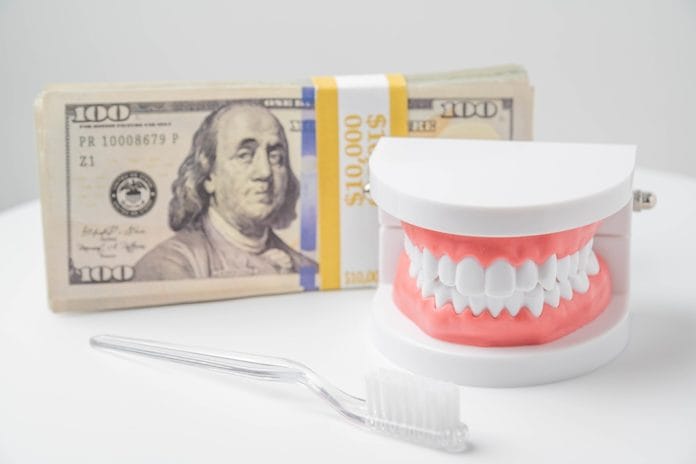Living on an irregular income as a temporary, commission-based, or even hourly dental hygienist can be tricky. Your income can fluctuate drastically, leaving you feeling uncertain about your finances and possibly even living paycheck to paycheck. In today’s volatile economy, no one wants to be left struggling if something happens to their steady paycheck.
Before I set out on my own as a temp dental hygienist, I was making “good money” in private practice and spending it just as fast. My pay was set and steady, but it was all turned upside down with changes in pay structure and new leadership.
Unfortunately, I’m not the only dental hygienist this has happened to. With changes in practice structure, corporate buyouts, and job market saturation, the need for financial clarity and security has never been more apparent. Add the current unemployment crisis caused by COVID-19, and a plan is essential as we return to steady work.
Additionally, when it comes to your finances, having a clear picture of how your money flows leads to better choices that ultimately lead to financial security (which gives you options with your career).
Below I’ve outlined the four accounts you need to have a simple and clear view of how your money flows. This type of system works for irregular and steady income types alike. It’s easy to set up, and these accounts should be able to be opened at your local bank for free.
I call it then BEST method: Basic checking, Everyday spending, Savings, and Tax savings.
Basic Free Checking Account
You’ll deposit your paychecks into and pay your monthly bills from this account. This account will not be used for purchases. Only use this account to deposit funds and pay predicable bills such as water, sewer, gas, electric, internet, etc. Your basic checking account should have limited transactions, and it should be clear how much money is leaving and entering it daily.
Even with a fluctuating income, you’ll be able to see if you have enough money to pay for your essentials and how much extra you have for everyday spending. Transferring a set amount from this account into a spending account each month will help you stay on budget and track everyday purchases better.
Everyday Spending Account
This is the account you will use for everyday purchases such as fuel, groceries, eating out, and incidentals. Estimate the amount you’ll need for daily purchases each month and transfer that amount into this account. An alternative to the spending account is to take out cash each month. Use only cash for day-to-day purchases, or use a credit card to track your purchases with a set limit.
Rain, rain, go away, come again another day. Rainy days come, some are torrential downpours, and some are a slight drizzle, but you need to be prepared. The general recommendation is about three to six months of living expenses. As a temp, this is especially important because when the slow times come (like the dreaded Slow-tember), you know that you have something to fall back on.
Pace yourself with small steps for reaching each milestone on the way to six months of income saved. Start with your long-term goal in mind and break it down into small bite-sized chunks. For example, if your goal is to have six months, let’s say $10,000 for simplicity, of expenses saved in two years, you’ll need to save $416.67 per month.
Tax Savings Account
For each paycheck you receive without a W-2, deposit 25% into this account. This mainly applies to hygienists or assistants who have sources of side-gig income. For example, many hygienists also do work as fitness instructors, online creators, and even as bookkeepers. If you set aside a certain amount each time, you’ll resist the temptation to spend the entire amount, and you should have enough to pay your tax bill at the end of the tax year. Please note, hygienists are not to be paid with a 1099 when working clinically, as they are not independent contractors.
Tax savings accounts are also useful if you aren’t sure how much you will owe at the end of each year. For many hygienists, upon graduation, they make significantly more income than before, which means a jump in taxable income. A tax savings can be a safety net to ensure you aren’t stuck with a tax bill with no means to pay it.
After working with a tax professional and developing more of an expectation for income, you may be able to eliminate this category. Each individual has specific needs when it comes to tax savings. I would consult a CPA to get an idea of how much to save or possibly adjust your withholdings to eliminate a tax bill.
Retirement Account
I am not an investment professional, so I can’t advise you on which retirement account you should choose. Ask a professional for help making the right kind of investment for your situation. Just know that a retirement account is essential for your future, even if your employer does not offer an employer-sponsored plan.
These accounts are in no way all the accounts you will ever need. These are just the four BEST bank accounts every dental hygienist needs. For some, your overall financial plan may include other savings accounts for vacations, school tuition, a new car, or Christmas gifts. The BEST plan is a simple, quick starting point for gaining clarity and reducing the feeling of being overwhelmed by personal finances.
Financial freedom gives us the opportunity to make career choices based on our goal, not our wallets. It helps keep us from being stuck in jobs we don’t enjoy and protects us from the unknown. By implementing these very simple tools, we can stamp out financial woes and refocus our attention on what really matters, crafting a career we love.











